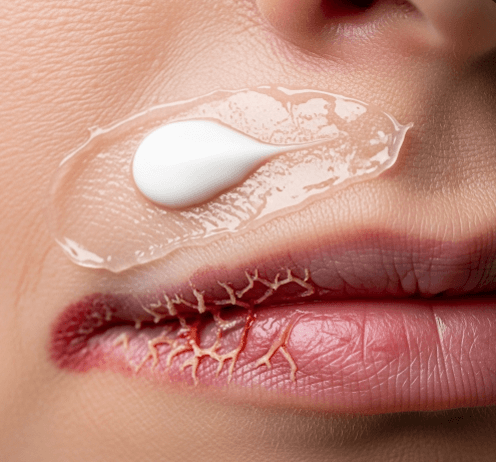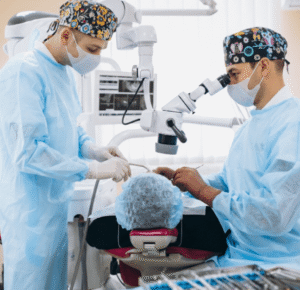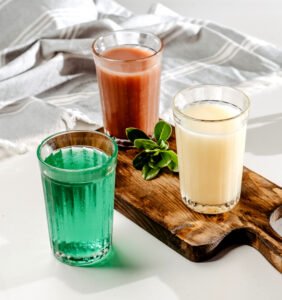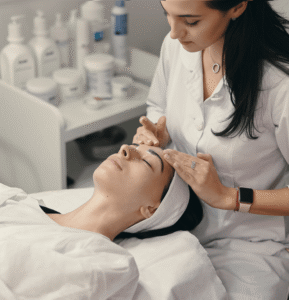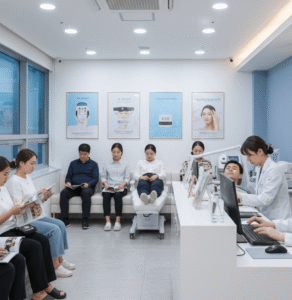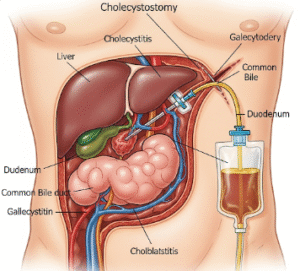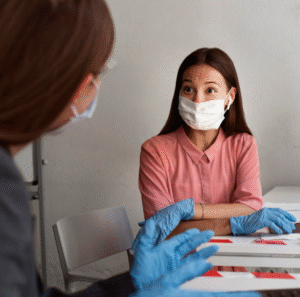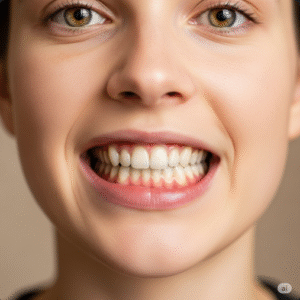Targeted therapy for lip corner inflammation and infection control
What it is
Angular cheilitis is an inflammatory condition that affects the corners of the mouth, leading to painful cracks, redness, swelling, and sometimes crusting. It is commonly caused by a combination of fungal (Candida albicans) and bacterial infections, as well as skin barrier breakdown from saliva pooling, lip licking, or ill-fitting dentures.
This condition can affect individuals of all ages, including children, the elderly, and people with weakened immune systems. While not dangerous, angular cheilitis can be persistent, uncomfortable, and cosmetically concerning.
Treatment focuses on two key elements:
- Antifungal therapy – to control Candida overgrowth.
- Barrier protection – to restore the lip’s natural defense and prevent recurrence.
In Korea, dermatologists and oral specialists manage angular cheilitis with a combination of topical medications, barrier creams, and preventive counseling.
Why it’s done
Treating angular cheilitis with antifungal and barrier therapy is essential for:
✔ Symptom relief – Reduces pain, burning, and discomfort while speaking or eating.
✔ Infection control – Clears fungal or bacterial overgrowth, preventing worsening or spreading.
✔ Skin healing – Restores the lip corners, preventing scarring or pigmentation.
✔ Recurrence prevention – Barrier care reduces moisture accumulation and irritation.
✔ Cosmetic confidence – Smooth, healthy lip corners improve appearance and self-esteem.
Alternatives
Alternative treatments may be used depending on the cause.
→ Topical antibiotics – If bacterial infection (usually Staphylococcus or Streptococcus) is dominant.
→ Systemic antifungals or antibiotics – For severe or resistant cases.
→ Nutritional supplementation – Addressing deficiencies in iron, folate, or B vitamins that contribute to recurrence.
→ Dentistry adjustments – Correcting poorly fitting dentures or braces.
→ Moisturizers or emollients – For mild, non-infectious irritation.
Korean clinics emphasize a combined antifungal + barrier approach while addressing underlying factors such as dental or nutritional issues.
Preparation
Before starting therapy, proper evaluation ensures accurate diagnosis.
➤ Clinical examination – Doctors inspect the lips and mouth corners for redness, cracks, or swelling.
➤ Swab culture – Sometimes performed to distinguish between Candida and bacterial causes.
➤ Medical history – Review of immune status, diabetes, nutritional health, and dental conditions.
➤ Trigger assessment – Identifying habits like lip licking, frequent mask use, or saliva pooling.
➤ Patient counseling – Educating patients about the dual role of antifungal therapy and barrier protection.
How it’s done
Treatment in Korea typically involves a dual therapeutic regimen.
➔ Antifungal therapy –
- Topical antifungal creams such as clotrimazole, miconazole, or nystatin applied 2–3 times daily.
- For stubborn cases, oral antifungals may be prescribed.
➔ Barrier protection –
- Application of zinc oxide ointment, petroleum jelly, or specialized lip barrier creams to shield against moisture.
- Restores the natural barrier and prevents saliva irritation.
➔ Adjunct therapies –
- Topical antibiotics if bacterial infection is confirmed.
- Vitamin or iron supplementation for deficiency-related cheilitis.
- Dental adjustments for ill-fitting prosthetics.
➔ Lifestyle guidance –
- Avoid excessive lip licking or saliva pooling.
- Keep lips moisturized with safe, fragrance-free balms.
Recovery
Recovery from angular cheilitis is usually quick with proper treatment.
→ Most cases resolve within 1–2 weeks with consistent antifungal and barrier use.
→ Pain relief and improved comfort often occur within a few days.
→ Long-term recurrence prevention is achieved by addressing underlying causes.
→ Cosmetic improvement is noticeable once cracks heal and redness fades.
Complications
If left untreated or mismanaged, angular cheilitis may lead to:
✔ Chronic or recurrent episodes – especially if underlying causes are not corrected.
✔ Secondary bacterial infection – worsening pain, pus, or spreading redness.
✔ Scarring or pigmentation – rare but possible with repeated flare-ups.
✔ Spread of Candida – into the oral cavity (oral thrush).
✔ Psychological distress – due to persistent cosmetic concerns.
In Korea, such risks are minimized with comprehensive evaluation and dual therapy.
Treatment options in Korea
Korea offers advanced and holistic care for angular cheilitis.
➤ Integrated dermatology and dental clinics – Collaboration ensures causes like dentures or braces are addressed.
➤ Advanced antifungal creams – Readily available and often combined with mild corticosteroids for severe inflammation.
➤ Barrier-focused skincare – Clinics emphasize zinc-based or protective emollient regimens to restore natural defense.
➤ Adjunctive cosmetic care – Light therapy or scar-prevention ointments may be added in recurrent cases.
➤ Parental guidance for children – Education programs teach families how to prevent saliva-related cheilitis.
➤ Medical tourism readiness – International patients benefit from bilingual consultations and structured treatment programs.
➤ Research and innovation – Korean dermatologists actively study lip barrier health and Candida management, ensuring up-to-date treatments.
By choosing antifungal + barrier therapy for angular cheilitis in Korea, patients receive fast relief, effective infection control, and long-term cosmetic recovery, all under expert dermatologic care.

